|
|
|
Cold weather now makes last summer's heat and
wildfires a (sort of) distant memory |
|
January 1, 2016 |
In retrospect, the foundation for the record
2015 fire season was being laid in the very
first months of the year: January, February, and
March in early 2015, when an unusually warm, dry
weather pattern settled in, melted area mountain
snowpacks, and yielded little snow. Drought
conditions in spring and early summer, with high
temperatures in the summer months, led to rising
fire danger.
The Idaho Department of Lands began battling
fires in May 2015.
The first of Boundary County's two big
wildfires, the Baker's Camp Fire, started with
lightning strikes in the Smith Creek area when a
storm passed through on June 29. That fire went
on to burn approximately 50 acres before being
brought under control.
(Story continues below this photo)
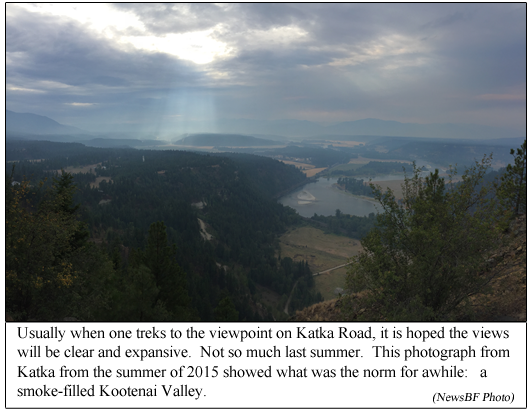
One month after lightning started the Baker's
Camp Fire, another lightning storm ignited
Boundary County's second big summer wildfire,
the Parker Ridge fire. A little over two weeks
after it began, the Parker Ridge Fire had
expanded to nearly 2,000 acres. On August 14, it
broke out, crossing the West Side Road, and
ultimately sweeping across Boundary County's
northern Kootenai Valley, jumping the Kootenai
River, and forcing evacuations of homes in the
Porthill and Farm to Market areas. By the end of
August the Parker Ridge fire had burned
approximately 6,600 acres.
(Story continues after these photos)
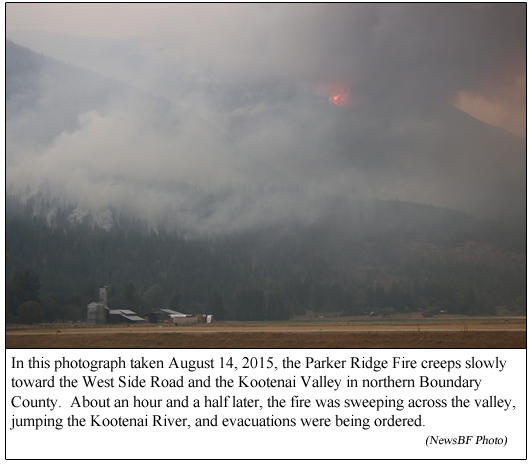
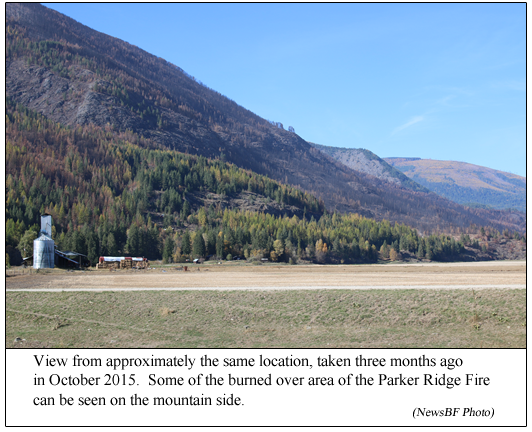

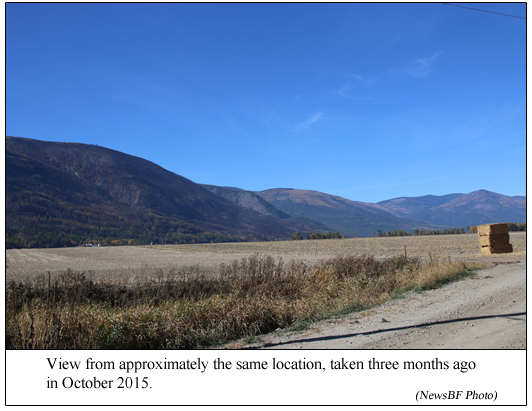
Read on for a feature story put together by the
Idaho Department of Lands about the
record-setting 2015 fire season.
A look back at the 2015 fire season
by the Idaho Department of Lands
Last year, 2015, had a five-month long fire
season—one of the worst on record for northern
Idaho.
The Idaho Department of Lands (IDL) and two
timber protective associations fought fires
beginning in May 2015, and were still mopping up
fires toward the end of October. Together we
have put out close to 300 fires that burned
75,000 acres, racking up close to $80 million in
fire suppression costs, about $60 million of
which Idaho taxpayers will pay.
Nearly half the fires we fought were human
caused.
The total number of fires on lands protected by
the State of Idaho was a fairly typical 89
percent of the 20-year average, while the number
of acres burned was huge—594 percent of the
20-year average.
The vast majority of wildfires are put out
before they reach ten acres. However, the fires
that escape initial attack cost taxpayers the
most money to suppress. That's particularly true
when the fires require the use of an incident
management team. Fourteen IDL fires required the
use of 27 incident management teams. The teams
are interagency groups of fire management
professionals specially trained and experienced
in managing complex wildfires.
Agencies order a team when a fire escapes
initial attack and is expected to exceed the
agency's local district resources. There are
high costs associated with the use of Type 1 and
Type 2 incident management teams.
Among the largest, most expensive fires was the
Clearwater Complex fires that destroyed 48 homes
and 70 other buildings near Kamiah in Idaho
County last August. Those fires cost more than
$25 million to suppress and burned more than
68,000 acres.
A total of 63 residences and 79 other structures
were lost this year in fires fought by the State
of Idaho.
Approximately 740,000 acres burned across the
state in 2015, nearly 80 percent owned and
managed by the U.S. Forest Service and Bureau of
Land Management, Idaho's two largest land
managers.
Approximately 28,000 acres of endowment lands
managed by IDL burned. Of that, 7,000 acres of
endowment timber land burned, creating
opportunities to make more money for public
schools through 15 planned fire salvage sales
that will produce 88 million board feet of
timber and 5,500 acres of
regenerated forests into the future. The other
1,500 acres of forested endowment lands that
burned are too rocky and steep, or hold minimal
volume, to be cut and then replanted.
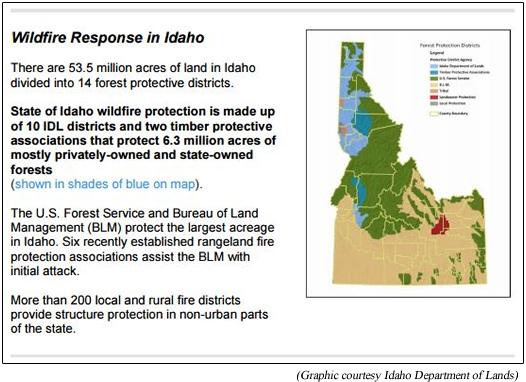
|
|
|
|
Questions or comments about this
article?
Click here to e-mail! |
|
|
|
|

